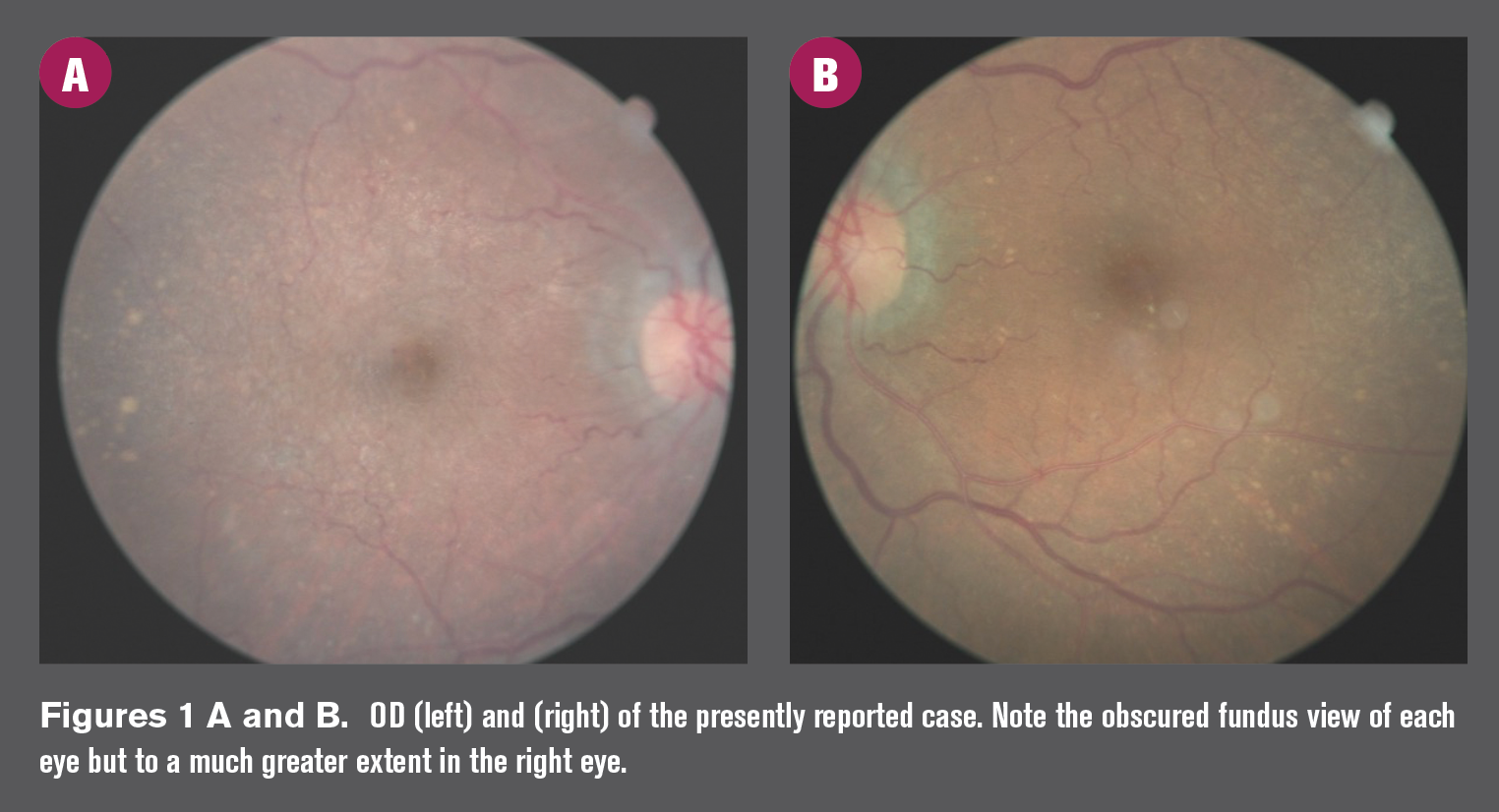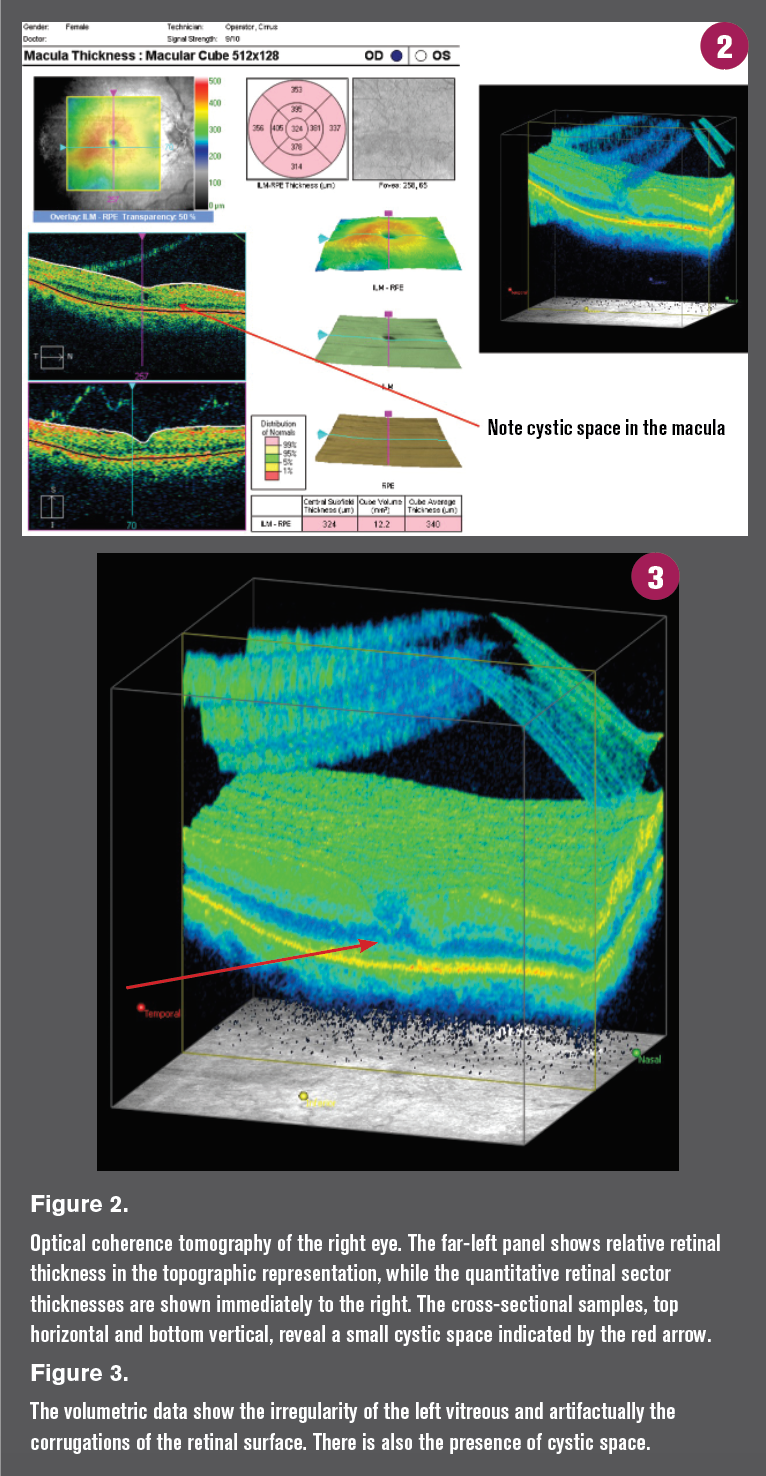OCT in DR follow-up highlights importance of retina-vitreous attachment
Relationship between these two clinical structures difficult to assess without imaging.


Figures 3 and 4

This case example highlights how continued attachment between retina and vitreous among patients with diabetic retinopathy may be an ominous sign. Conversely, documentation of complete vitreous detachment offers a more benign prognosis regarding the vascular complications of diabetic retinopathy.
A 74-year old black female with diabetes was evaluated as part of her follow-up for non-proliferative diabetic retinopathy. While she did not admit to new visual complaints, visual acuity was correctable to 20/60 in her right eye and 20/25 in her left, which was stable from the previous visit (Figures 1 A and B).
Note the distinct differences in the color-fundus photography which is due to artifacts interfering with image capture. Optical coherence tomography (OCT) was ordered and revealed significant disturbances of the retinal layers in each eye but to a greater extent in the right eye. (Figures 3 and 4).
Of note is that there appeared to be a corrugated contour to the retinal surface of each eye on the volumetric scan of the OCT. This corresponds with the projected undulations of the vitreous. However, the cross-sectional views do not support this nor did the clinical observation.
Related: Toxoplasmosis shows varied diagnosis
Analysis of the cross-sectional images of the right eye reveals thickened hyaloid membrane as well as irregularity of the separated vitreous gel. In addition, there is the presence of at least one cystic space (horizonal sample) in this eye.
The topographic representation of the retina suggests overall thickening that may not be apparent in the cross-sectional scan samples. The volumetric representations in each eye are revealing in that there is evidence of vitreo-macular traction (not adhesion1), which probably contributes to the reduced visual acuity.
Clinically, it is difficult to assess the relationship between the vitreous and macula, especially in the right eye of this patient. It is important to know the vitreo-macular interface status because continued attachment between retina and vitreous among patients with diabetic retinopathy may be an ominous sign. Conversely, documentation of complete vitreous detachment offers a more benign prognosis regarding the vascular complications of diabetic retinopathy.2,3
More by Dr. Semes: Cotton-wool spots lead to tissue loss and RNFL defect
References:
1. Duker JS, Kaiser PK, Binder SP, et al. The International Vitreomacular Traction Study Group classification of vitreomacular adhesion, traction, and macular hole. Ophthalmology. 2013 Dec;120(12):2611-2619.
2. Jackson TL, Nicod E, Angelis A, et al. Vitreous attachment in age-related macular degeneration, diabetic macular edema, and retinal vein occlusion: A systematic review and metaanalysis. Retina. 2013 Jun;33(6):1099-1108.
3. Akiba J, Arzabe CW, Trempe CL. Posterior vitreous detachment and neovascularization in diabetic retinopathy. Ophthalmology. 1990 Jul;97(7):889-91.

Newsletter
Want more insights like this? Subscribe to Optometry Times and get clinical pearls and practice tips delivered straight to your inbox.